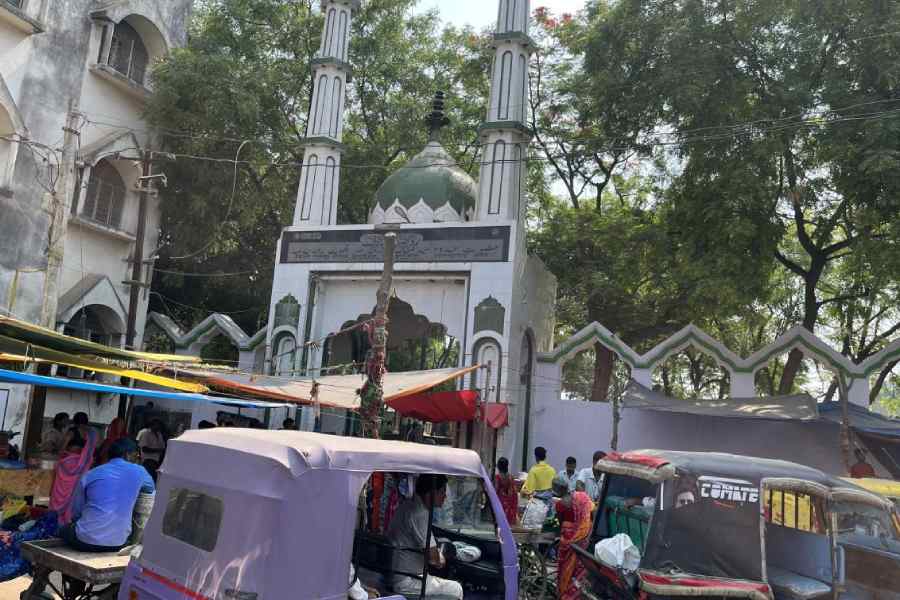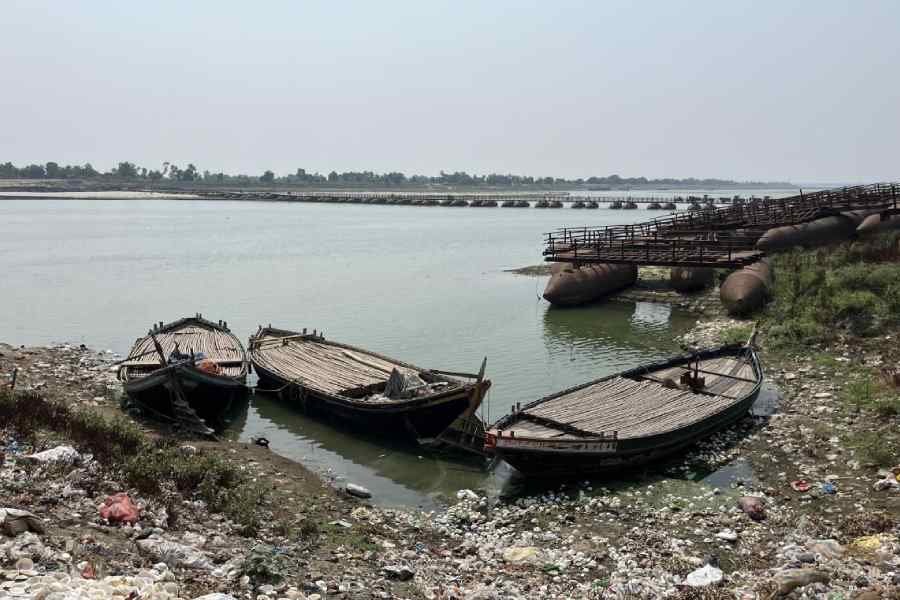One of the most captivating aspects of the last two Lok Sabha elections in Bihar was the rapture of the voter with Narendra Modi. He has been almost the only outsider in contemporary electoral politics other than Indira Gandhi to have struck such a deep, and almost immediate, chord with a people at the far end of where he comes from. I found it impossible to interrogate the rapture or reason with it. Its nature was almost blind, like faith. “Modiji humko achchha lagta hai, bas!” Argument over.
That rapture has either been sublimated to a degree that it doesn’t need to exhibit itself, or it has given. There’s a stunning absence stalking the battlefields of Bihar this summer — the gargantuan Modi cutouts, the skyscraper-grade hoardings, the flex-screens staring down from wherever the gaze would go, the “Modi-Modi-Modi-Modi” chant that you heard everywhere you went, the “Ghar-Ghar-Modi-Har-Ghar-Modi” surround-sound booming all around.

The entrance to Kachchi Dargah on the banks of the Ganga near Patna. Sankarshan Thakur
Where has it all gone? Patna votes in a week and the famed Narendra Modi blitz is yet to land. In parts of Bihar that have already gone and voted, there isn’t a quarter of a hint it even arrived there in 2024. What happened? Modi is deeply invested in himself and his image and imagery, perhaps our most craftily curated politician. Carpetbombing the battlefield is his style. But curiously, mystifyingly, not in Bihar this election.
There could be contrary reasons for this, and there’s contrary articulation of it. A self-professed Modi bhakt tells me in Patna: “Modiji has now made home in the hearts and minds of Biharis, he does not need to print posters like ordinary netas, he has gone way above all this, try to understand this phenomenon.”
A Modi-baiter tells me, on the other hand, coining a twisted jab in a manner rather typical of Biharis: “Becoj Modi maigic lojing laugic. Simpul. Jumla, jumla, jumla, sab jumla, no kaam, no kaaj, littil bit phree anaj.” He then laughs out loud, taken by his own vocal burst.

Stalled boats at the Ganga bank at the Kachchi Dargah. Sankarshan Thakur
We were at Kachchi Dargah, not far from Patna and he was one of a stream of daily wage earners coming off the riverine island of Raghopur to find work for the day. Name: Rajender Rai, Class IX fail. That’s how he introduced himself. “What has Modi done for me? Nothing, I do what I do and eat and live off it.”
The Ganga passes Patna on a latitudinal axis, arriving from the great ghats of Allahabad and Benaras and hurrying east to become part of the Bay of Bengal. The road that streaks east out of Patna towards Bakhtiyarpur runs past Kumhrar, a scattered ruin of Patliputra, the seat of Mauryan power, and runs by the southern bank of the river.
Alongside proliferates an unbroken river-fed frill of settlements that have so bloated at the seams over the years that the river can’t feed them enough any longer. Poverty and its ramshackle chaos reigns the roadsides.
Not very far down this road — and just a little short of the mofussil Bakhtiyarpur, home of chief minister Nitish Kumar — is the cacophonous retail cluster that calls itself Kachchi Dargah after a pir — Hazrat Maqdoom Sayyid Shahabuddin Pir Jagatjot — who is said to have arrived here from Kashgar in medieval times and made the riverbank his own. Around the shrine of the mystic whirls a worldly madness — tea and sweetmeats and flying battalions of flies and bees swirling over them; motor spares and repairs; quilts and mattresses; bundled raw tobacco; flurries of fish being poured out of nets fresh off the water; a flamboyant carpet work of vegetables, slaughtered goats being given a wash by the roadside before they’ll be strung up on hooks, cut up and sold; rivulets of streaming human piss.
Kachchi Dargah was also station at one time to a small colony of boat-makers, hardy skilled men who could bend and bow whole tree-lengths of timber and band them with iron and shape and cure them so they became worthy of sailing the waters. They have a history, but not much of a future; not with all the mechanised boats, not with all the bridges being built. The boatmen have mostly abandoned their boats and moved on, to trades that offer feed. Not one decibel in all of this clamour about the impending vote. Not even to prodding, no time from the trading, no time, perhaps, for something that has promised and promised over the years and delivered little: “Politics gives netas power and money and influence, what does voting for them give us? Waste of time.” It’s not the sense that comes off one voice, the sense is widely shared.
We headed back, and we knew we were close to Patna when huge billboards began to flank the road — a new car, a smartphone, a jewellery chain, a new housing complex. Not one of them was taken by arguably the most profusely and widely advertised entity of this nation: Narendra Modi.











